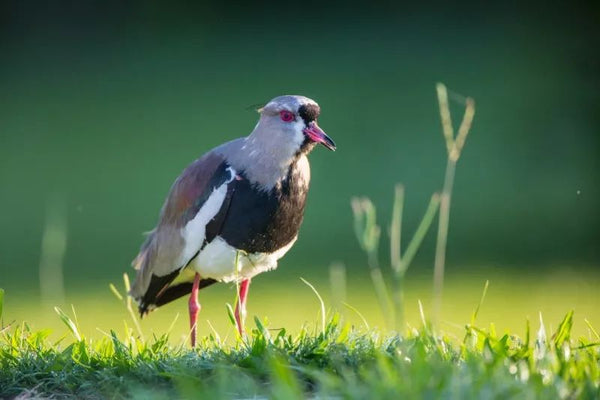Spring is here, the sun warms the earth.the flowers are blooming, The birds are singing. Have you observed and recognized these elves of nature up close?Birds have beautiful and melodious calls, light and agile postures, and colorful feathers. They are charming beings.
By participating in birding activities, you can get closer to nature and relax your body and mind.To participate in bird watching activities, you must first be in awe of nature and love birds from your heart, and secondly, you must be willing to spend time and energy on doing this natural observation.
So, what do you need to prepare for birding? Share it with you today!
1. Clothing
Clothes, shoes, and hats are best to choose outdoor brands that are comfortable and easy to exercise. The colors are mainly plain colors such as army green, black and dark gray. Birds have very keen vision, and if they are dressed too brightly, they will be disturbed. If they are dressed in colors similar to the surrounding environment, they will be more friendly.
2.Backpack.
Backpacks or shoulder bags ( don’t be too bright), try to choose plain and light ones. The main bag is spacious enough to hold a picture book,water cups, snacks, practical tools, first aid supplies, etc. The recommended size of the backpack is 15L. You can also try it at an outdoor physical store according to your own preferences.
3.Binoculars.
A suitable telescope can make bird watching more effective with less effort.
The telescopes used for bird watching can be briefly divided into monoculars and binoculars. The single tube has a high multiple and a large volume, which is suitable for observing birds with a long distance and low activity frequency. The binoculars are small in multiples, small in size, and easy to carry. They are suitable for observing close-up and high-frequency birds. In daily circumstances, the most used thing is binoculars.

4.Camera
Early birding, especially the use of binoculars to observe wild birds in their natural state. Today, bird watching has become an outdoor activity to record birds with images, and bird watching photography has become an important leisure method for some people, which can stimulate the public's awareness of bird protection and is beneficial to bird lovers and bird protection. Bird data can also be collected to provide basic information for bird research and conservation.

If you will spend long time outdoors and are going to take a lot of beautiful photos, the battery in the camera and the phone may run out of power. If you want to keep these devices fully charged at all times, you need to bring portable power station.
Bird Photography Tips
(1)Morality and Patience
Photographing birds should be about photographing their natural behavior. A stressed bird, whether flying or swimming away, is inherently less fun than a bird that relaxes or interacts with other animals.
(2)The lens
A decent telephoto photo is definitely an essential part of any animal photographer. Different types of lenses have pros and cons for telephoto shots. The advantages are those big, fast lenses that allow for faster shutter speeds at lower ISOs and still maintain refined sharpness, and a superb, shallow depth of field for isolating your subjects . The disadvantage is that it is bulky, bulky, and difficult to use.
(3) Shutter Settings
Shutter speed is very important for taking long distance photos of wildlife. In bird and wildlife photography, especially in wetland environments, the subject is in constant motion. At this time, it is necessary to shoot at 1/1000th of a second or more.
(4)Set The Focus
When photographing wildlife, you can choose to use single-point focus. This grabs the subject's eyes, and if the animal moves, I want my camera to automatically focus where I want it without having to keep pressing the focus button.
(5)Filming angle
The biggest mistake many animal photographers make is shooting from too high an angle. When you're upright, you'll be targeting wetland birds sitting on the water. This is by no means the best angle.
Instead, kneel, squat, sit, or even lie on the ground. A low angle will provide better separation of your subject and its environment, and can create a pleasing blur of foreground and background.
(6)Shutter Settings
Shutter speed is very important for taking long distance photos of wildlife. In bird and wildlife photography, especially in wetland Settings, subjects are constantly in motion. Take more than 1/1000 of a second.







